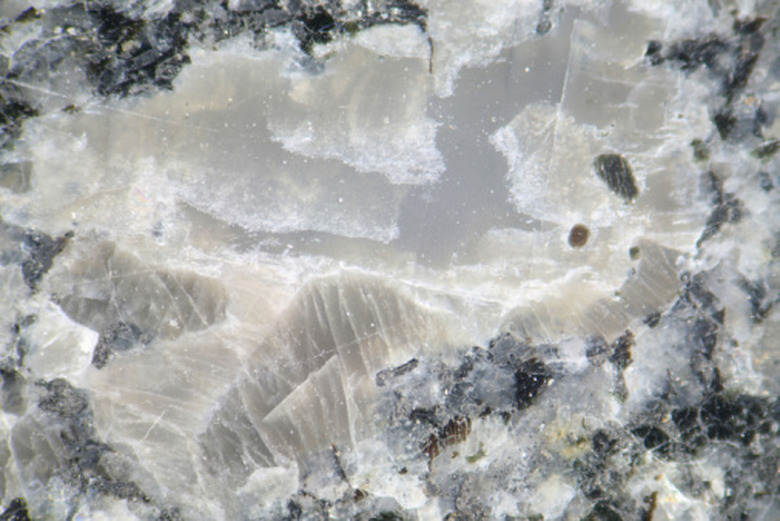Properties Of Igneous Rocks For Kids
Igneous rocks are one form of rocks commonly found on the Earth. They are created when hot magma from deep within the Earth cools and hardens. The magma can cool below the Earth's crust, or erupt as lava and cool on the Earth's surface.
Formation
Formation
Igneous rocks are classified by where they are formed. Those that are formed under the earth's surface are known as intrusive rocks. Those formed above the earth's surface are extrusive rocks.
Cooling and Grain
Cooling and Grain
Some igneous rocks cool quickly, in days or weeks, while others cool slowly over thousands to millions of years. Those that cool quickly tend to have a finer grain or a glassy texture. Examples include obsidian, pumice, scoria, andesite and rhyolite. Those that cool slower have larger crystals or a coarse grain. Examples include gabbro, diorite and granite.
Color & Composition
Color & Composition
Igneous rocks are classified by three types of colors and composition. Those with light colors are known as feisic. Examples include granite, rhyolite, pumice and obsidian. Those with intermediate colors are known as intermediate and include diorite, andesite and scoria. Dark-colored rocks are known as mafic. These include gabbro, basalt and scoria.
Examples
Examples
Look around volcanoes, such as in Hawaii. The molten rock, or lava, has cooled to form igneous rocks. Mount Rushmore, where the Presidents' faces are carved in the mountainside, was chiseled out of granite, another igneous rock. Half Dome is an igneous rock formation in Yosemite National Park.
Related Rocks
Over time, pressure can cause many layers of igneous rocks to form one larger rock. These are known as sedimentary rocks. When these igneous or sedimentary rocks are changed by some kind of pressure or heat from deep within the earth, they become known as metamorphic rocks.
Cite This Article
MLA
Coventry, Andrea. "Properties Of Igneous Rocks For Kids" sciencing.com, https://www.sciencing.com/properties-igneous-rocks-kids-8144464/. 24 April 2017.
APA
Coventry, Andrea. (2017, April 24). Properties Of Igneous Rocks For Kids. sciencing.com. Retrieved from https://www.sciencing.com/properties-igneous-rocks-kids-8144464/
Chicago
Coventry, Andrea. Properties Of Igneous Rocks For Kids last modified March 24, 2022. https://www.sciencing.com/properties-igneous-rocks-kids-8144464/
